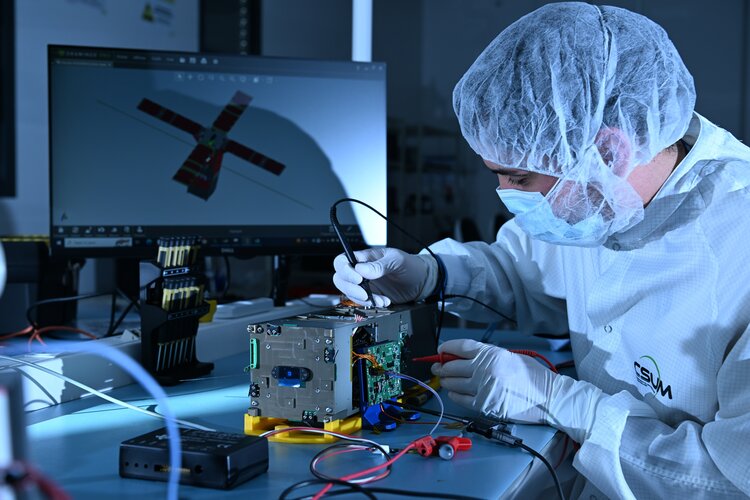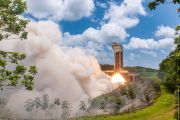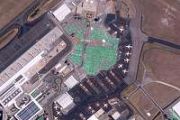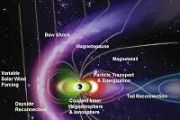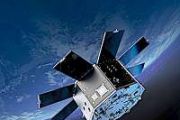
Copernical Team
NASA Goddard to Build Quake Detector for Artemis III Moon Landing
 NASA's Goddard Space Flight Center in Greenbelt, Maryland, will build a moonquake detector for astronauts to deploy on the Moon in 2026 during the Artemis III mission, which will return astronauts to the lunar surface for the first time in more than 50 years.
NASA selected the instrument, the Lunar Environment Monitoring Station (LEMS) as one of the first three potential payloads for Artem
NASA's Goddard Space Flight Center in Greenbelt, Maryland, will build a moonquake detector for astronauts to deploy on the Moon in 2026 during the Artemis III mission, which will return astronauts to the lunar surface for the first time in more than 50 years.
NASA selected the instrument, the Lunar Environment Monitoring Station (LEMS) as one of the first three potential payloads for Artem Comet Geyser: Perseverance's 24th Rock Core
 After investigating the high-standing bedrock at the Bunsen Peak workspace deep within the Margin Unit, the unique nature and composition of this rock was deemed worthy for collection of Perseverance's 24th rock core sample, Comet Geyser!
Bunsen Peak is named after a prominent peak in Yellowstone National, Park, Wyoming, USA, and the namesake for Comet Geyser is the silica-sintered cone ge
After investigating the high-standing bedrock at the Bunsen Peak workspace deep within the Margin Unit, the unique nature and composition of this rock was deemed worthy for collection of Perseverance's 24th rock core sample, Comet Geyser!
Bunsen Peak is named after a prominent peak in Yellowstone National, Park, Wyoming, USA, and the namesake for Comet Geyser is the silica-sintered cone ge NASA seeks community input to refine space technology priorities
 NASA's Space Technology Mission Directorate (STMD) is revising its approach to technology development as it aims to enhance its missions to the Moon, Mars, and beyond. The agency has identified nearly 190 national space technology needs and is soliciting input from the American aerospace community to prioritize these for future endeavors.
Dr. Kurt Vogel, associate administrator for Space T
NASA's Space Technology Mission Directorate (STMD) is revising its approach to technology development as it aims to enhance its missions to the Moon, Mars, and beyond. The agency has identified nearly 190 national space technology needs and is soliciting input from the American aerospace community to prioritize these for future endeavors.
Dr. Kurt Vogel, associate administrator for Space T Ariane 6 debut includes Portugal's first university CubeSat for aircraft tracking
 Europe's next-generation rocket, Ariane 6, is set to embark on its inaugural flight, carrying a series of space missions each with their own distinct goals and enthusiastic teams supporting them. This launch will demonstrate the capability and adaptability of the new heavy-lift launcher, whether it's deploying satellites to observe Earth, exploring deep space, or testing key new technologies in
Europe's next-generation rocket, Ariane 6, is set to embark on its inaugural flight, carrying a series of space missions each with their own distinct goals and enthusiastic teams supporting them. This launch will demonstrate the capability and adaptability of the new heavy-lift launcher, whether it's deploying satellites to observe Earth, exploring deep space, or testing key new technologies in Boeing Starliner rolls to Cape Canaveral Space Force Station ahead of May launch
 Boeing's Starliner spacecraft took a road trip Tuesday before its May 6 liftoff, moving from the Kennedy Space Center to the Cape Canaveral Space Force Station.
Starliner boarded a transporter at the Commercial Crew and Cargo Processing Facility at Kennedy Space Center on Monday. Final checks were completed Tuesday for the short trip to the United Launch Alliance's Vertical Integration
Boeing's Starliner spacecraft took a road trip Tuesday before its May 6 liftoff, moving from the Kennedy Space Center to the Cape Canaveral Space Force Station.
Starliner boarded a transporter at the Commercial Crew and Cargo Processing Facility at Kennedy Space Center on Monday. Final checks were completed Tuesday for the short trip to the United Launch Alliance's Vertical Integration BioNutrients-3 yields fresh kefir in lunar analog mission
 To sustain astronauts on extended space voyages, Ames Research Center's Space Biosciences Division has engineered a microbially-based food system under the BioNutrients initiative. This innovative approach leverages genetic engineering to produce vital nutrients and medicinal compounds using minimal resources. It involves the use of dried microbes and food-grade media stored in compact bioreacto
To sustain astronauts on extended space voyages, Ames Research Center's Space Biosciences Division has engineered a microbially-based food system under the BioNutrients initiative. This innovative approach leverages genetic engineering to produce vital nutrients and medicinal compounds using minimal resources. It involves the use of dried microbes and food-grade media stored in compact bioreacto Citizen science project classifying gamma-ray bursts
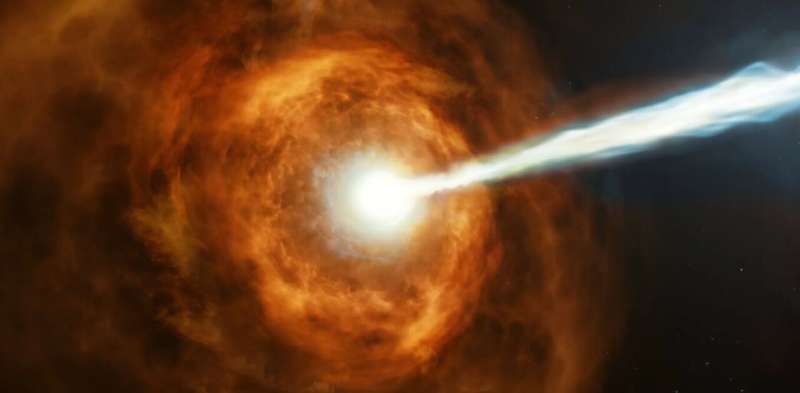
When faraway stars explode, they send out flashes of energy called gamma-ray bursts that are bright enough that telescopes back on Earth can detect them. Studying these pulses, which can also come from mergers of some exotic astronomical objects such as black holes and neutron stars, can help astronomers like me understand the history of the universe.
Space telescopes detect on average one gamma-ray burst per day, adding to thousands of bursts detected throughout the years, and a community of volunteers are making research into these bursts possible.
On Nov. 20, 2004, NASA launched the Neil Gehrels Swift Observatory, also known as Swift. Swift is a multiwavelength space telescope that scientists are using to find out more about these mysterious gamma-ray flashes from the universe.
Gamma-ray bursts usually last for only a very short time, from a few seconds to a few minutes, and the majority of their emission is in the form of gamma rays, which are part of the light spectrum that our eyes cannot see.
NASA's VIPER moon rover gets its head and neck
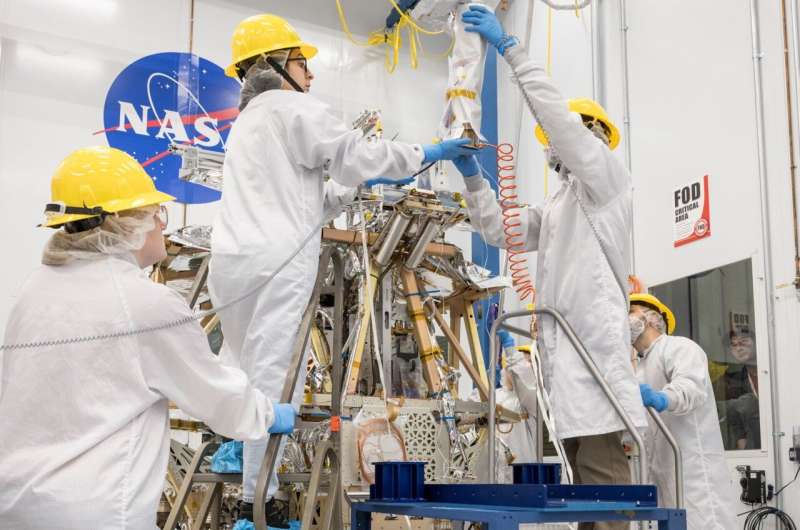
In this image from Feb. 12, 2024, engineers lift a mast into place on NASA's VIPER (Volatiles Investigating Polar Exploration Rover) robotic moon rover. VIPER's mast and the suite of instruments affixed to it look a lot like the rover's "neck" and "head." The mast instruments are designed to help the team of rover drivers and real-time scientists send commands and receive data while the rover navigates around hazardous crater slopes, boulders, and places that risk communications blackouts.
The team will use these instruments, along with four science payloads, to scout the lunar south pole. During its approximately 100-day mission, VIPER seeks to better understand the origin of water and other resources on the moon, as well as the extreme environment where NASA plans to send astronauts as part of the Artemis campaign.
Provided by NASA
Space exploration: A luxury or a necessity?

"Oh, come on Daniel, space travel is so expensive, and pointless!" These were the words of my friend Max, during a Christmas party where I was discussing my thesis project: studying places on Earth where the living conditions are so extreme, they could hold lessons for future space missions.
Ariane 6 launches: Robusta-3A for weather and radiation
